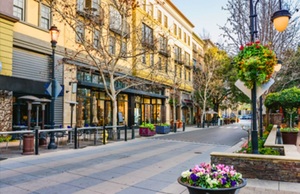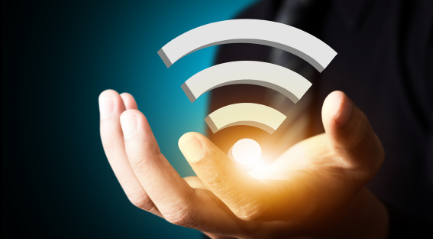Bem-vindo à RUCKUS Networks, parte do portfólio líder mundial de soluções de rede da CommScope. Saiba mais.

Strangely enough, several years before anyone had ever heard of COVID, I was part of an effort to help a municipality do exactly that. Through RUCKUS, I was part of the team that demonstrated how shared access to digital infrastructure—that is, public wi-fi and all the services it connects—can indeed pay for its initial investment quickly and establish long-term growth in economic activity and corresponding tax revenues.
San Jose, CA: Public Wi-Fi helps parking, public safety, trade, commerce and schools
I personally worked with our RUCKUS unit to deploy a robust public Wi-Fi network in San Jose, California. This was long before anyone knew what a global pandemic could do to everyday life, but it turned out to be a prescient investment—even if we could never have guessed the reason why.
- Parking. The initial challenge for San Jose was the proliferation of private parking lots in the city, which reduced the amount of revenue gained from city parking meters. Digital meters were installed to simplify payment and collection, as well as to power a smart parking app that showed real-time parking availability on drivers’ mobile devices. This required a public wi-fi, which we delivered. The incremental revenue increase not only paid for the initial investment but has since funded additional services and improvements.
- Public safety. The same network was leveraged to connect traffic and safety cameras, with the addition of PoE wireline connectivity where needed. The network also empowered better information sharing for first responders, helping them better serve the public and save lives.
- Tourism and trade. The network was extended to the airport and San Jose McEnery Convention Center, where it could be customized to suit the specific needs of trade shows and exhibitions using the space. This was a new revenue center for the city; until then, exhibitors needed to invest in their own show-specific wi-fi resources. With the RUCKUS public wi-fi solution, exhibitors could log into a custom SSID from the moment they landed at the airport through the duration of their stay, with instant access to a recognizable network name at any time—for work or play.
- Downtown commerce. Promoting the public Wi-Fi as “Wickedly Fast Wi-Fi,” the service drew more users to downtown areas. Robust Wi-Fi encourages shoppers to linger, and lingering shoppers spend mor - resulting in economic growth as well as increased sales tax revenues to the city.
- Disadvantaged schools. Finally, East Side Union High School was added to the network, helping bridge the digital divide for the students of this disadvantaged district, which proved to be a vital lifeline for students when, years later, remote learning became a daily reality.
CLICK TO TWEET: How San Jose uses public Wi-Fi from RUCKUS and how CommScope can help other cities do the same
For San Jose in pre-COVID days, this investment gained public support because of its promised enhancements of quality of life for the citizenry and improved landscape for the chamber of commerce. Long after the initial costs have been recouped, San Jose continues to reap the benefits of this infrastructure. It even translates into higher home valuations as younger homebuyers seek super-connected smart homes and are willing to pay for the benefits—which in turn increases property tax revenues to fund further public improvements.
The moral of the story is that seed money, wisely spent, can help an agency, city or county—or ideally, combinations of those entities—build a long-term growth environment that adds value to everyday life while building in vital resiliency to the unexpected, as East Side Union High School found out.
Today, the challenge is obtaining that seed money from federally available relief funds—and that’s where CommScope can help you take the next step.
Let CommScope help you secure funding
CommScope is now providing assistance to municipalities and county governments in the application process through CommScope’s RUCKUS Funding Support Program. We’ve been helping schools and healthcare providers recover from the costs of the pandemic and improve their infrastructure to overcome its challenges since early spring, and we’re eager to help you in your funding application as well.
In fact, we’ve seen that multi-agency/multi-jurisdiction applications meet with greater success than those submitted by single agencies. We can help you complete the paperwork and draft a compelling proposal that not only helps you meet the immediate needs of the community, but also establishes a long-term plan to grow your local economy as well as improve tax revenues.
Contact CommScope’s RUCKUS Funding Support Program or visit our resource page today to get started.









